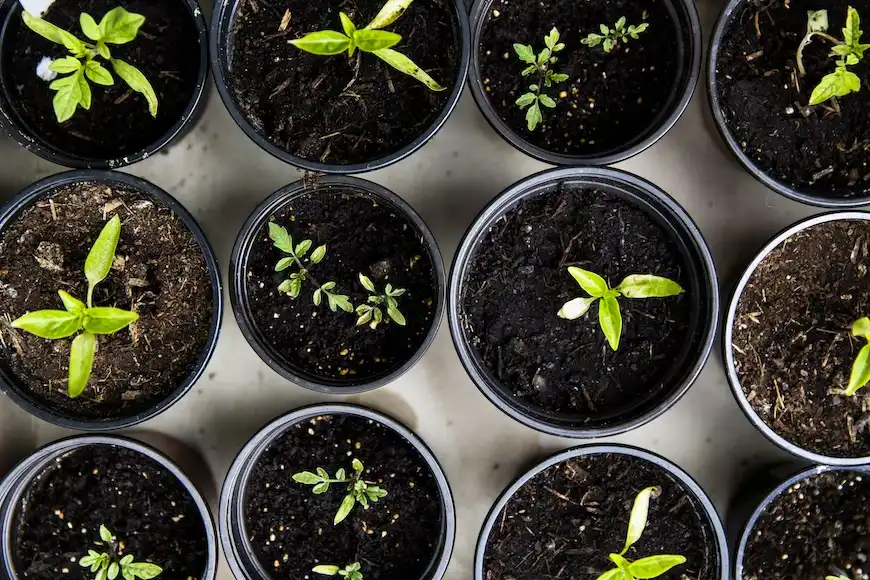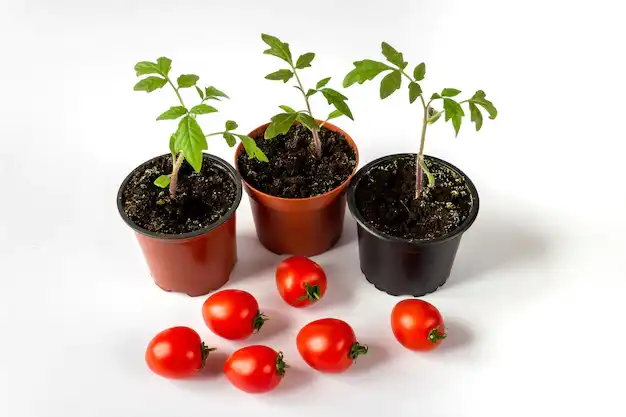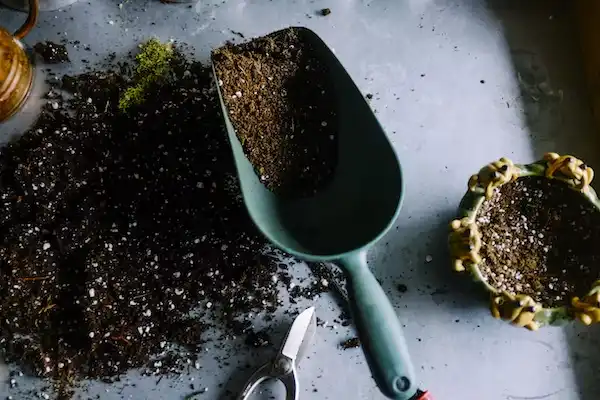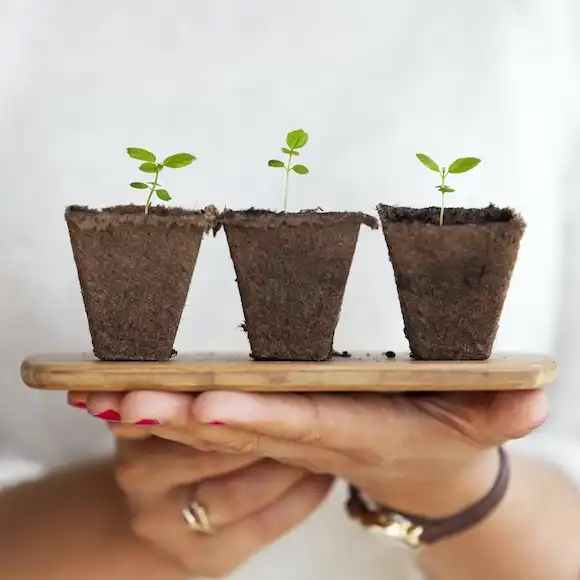Growing vegetables at home can be fun when you love gardening. When you have limited space in your backyard, you may be skeptical of the process. However, with a pot or container, you can do well in pots.
You can grow vegetables in a glasshouse, conservatory, or porch.
Become an insider. Subscribe to our newsletter for more top trending stories like this!
In this article, I share 10 essential tips on how to grow vegetables at home in pots.
10 essential tips on how to grow vegetables at home in pots.

Before we kick off to the essential points, think about your favorite vegetables that you like to eat and often buy at the supermarket. How often do you buy them? Would you rather grow them yourself?
Pondering upon these questions will help you get started on learning how to grow vegetables at home.
1. Decide on the vegetables to plant
Consider how frequently you eat a specific vegetable or the vegetables your family likes before deciding to cultivate your vegetables. You can choose the vegetables you wish to grow at home once you’ve figured it out.
Spinach, radishes, beans, corn, carrots, tomatoes, and potatoes are some options.
2. Decide on seeds or buy baby plants
Once you decide on the vegetables you want to grow, you can then decide on the seed of these vegetables or buy baby plants that you can replant in your pots at home. But make sure to decide if you’ll be growing these vegetables in separate pots or if you’ll plant multiples of them in the same pot. This way, it will be best to stick to either seeding or replanting.
I recommend that you choose the seed option, as it works for all types of vegetables. Secondly, a pack of seeds can yield you a year’s worth of vegetables, making it less expensive.
The earliest sprouts of your vegetables will also be visible. The satisfaction that comes with this sight, I bet, is something you wouldn’t want to miss.
Remember that if you cultivate your own plants from seed, it will take longer for them to yield a harvest than if you purchase plants that are already growing.
3. Choose a container
If you don’t have a garden plot for growing delicious, fresh produce, you can grow vegetables at home in pots, troughs, grow bags, or plastic containers. Your porch or another area of the property with direct access to sunlight are suitable locations for your pots.

For each seed or vegetable, use the appropriate-sized pot because smaller containers may deprive plant roots of moisture and nutrients. Aim for pots that are at least 45 cm deep and wide; otherwise, constant feeding and watering will be required.
Consider how many plants you intend to grow there and the size they will eventually reach. When selecting a pot depth for root vegetables, keep the vegetable’s size in mind as well. The size may be shown on the seed packet or label for the plant.
Because the plant will have less access to compost and nutrients if the container is too small, it will affect the size of your yield.
The shape, color, material, and style of your pots are entirely up to you. You can either vary things up a bit or adapt the style to your current outdoor location. Additionally, there is a lot of opportunity for recycling and upcycling vegetable-growing containers. Old sinks, chimney pots, automobile tires, and shipping crates are also effective options.
Additionally, make sure that the bottom of the pot or container has a drainage hole to allow air to freely flow and to allow excess water in the soil to drain.
4. Make drainage in the vegetable pots
Before you add your compost or soil, it’s a good idea to fill the holes you’ve cut in the bottom of the pot with a few stones or broken bits of the terracotta pot.
The ability of the container to drain excess water will be improved by adding a layer of stones, which will help to create a more balanced growth environment for your plants.
At the base of your container, there should be one sizable hole or a number of smaller ones.
If the drainage is inadequate, you may typically drill holes in the pot. To prevent soil from escaping the bottom of a large hole before adding soil, cover it with a coffee filter or plastic screening.
Your pot’s hole can close up if it is placed on a solid surface. Plants will drain more easily if you elevate your container with pot feet or a pot cart.
Become an insider. Subscribe to our newsletter for more top trending stories like this!
5. Choose a compost
For the best results, use sterile, proprietary potting composts. Composts could be cheap, saving you money you could use for other things. Homemade compost can be unclean, which increases the danger of insect and disease concerns.
However, if you want to produce organic vegetables, you can obtain decent results by adding 20 percent by volume of well-rotted manure to the potting soil in the bottom of their containers.

6. Mix garden soil with compost
If you want to utilize garden soil rather than compost, be careful to combine it with some compost to improve the soil’s nutrient content. If you use garden soil, you’ll also need to provide and water your plant on a regular basis.
Although garden soil is perfect for growing vegetables in pots at home, using compost may result in your plants developing less successfully.
Plants cultivated in containers typically require more nutrients than garden soil can provide. It may also be fairly dense, which contributes to waterlogging issues and leaves the plant with insufficient air.
That’s why it’s recommended to mix it with compost.
7. Feed the vegetables
The nutrients in the soil or compost can eventually run out if you are growing vegetables in pots. As a result, it’s critical to feed them frequently in order to promote growth. Use a plant food that is specifically formulated for use with fruits and vegetables.
The most popular kind of plant food is a concentrated liquid that you water your plants with after diluting it as directed. Additionally, you can purchase granules, which need to be carefully scraped into the soil after being distributed on top of it.
8. Make Watering a habit
Growing vegetables in the soil are completely different from growing them in a pot at home. The difference is that pot plants are more reliant on you for healthy growth. As such, you need to water the vegetables as well as feed them.
The soil should be kept uniformly moist but not drenched.
Because the edges of a pot are more exposed to hotter air, the soil becomes warmer and evaporation is accelerated.
Check the soil in your pots frequently during the warmer months, and water them if you see that the soil is getting dry. In order to reduce water loss due to evaporation, you should ideally avoid watering your pots during the hottest portion of the day. The optimal time to water is in the morning, and early evening is a close second.
Even though you might not need to water your pots at all in the cooler months, it’s still important to check the soil frequently.
9. Provide support to climbing plants
Some vegetables have different growing patterns than others. Climbing vegetables such as beans, tomatoes, and peas will need support to grow evenly. Hence, you’ll have to support the stem with garden canes or strong, thin sticks so the vegetables can hold unto them.
Pushing garden stakes into the pot’s edge and connecting the stems to them will assist the plants to navigate while growing.
10. Provide the right sunlight and temperature

Most vegetables, including tomatoes and peppers, benefit from and require full sunlight to develop. This means that you must expose them to direct sunlight for at least six hours each day.
In order to determine how long the sun will be directly overhead where you intend to place your vegetable pot, check the site every 30 minutes throughout the day. For an exact estimate, you can also use a solar calculator.
If you live in a hot climate, you might need to provide shade for your plants in the afternoon heat to prevent them from overheating. Additionally, it’s best to avoid using metal or black containers because they might get quite hot and cook the roots of your plant.
Read Also: How to Start Hiking as a Hobby (10 Essential Tips)
Become an insider. Subscribe to our newsletter for more top trending stories like this!





